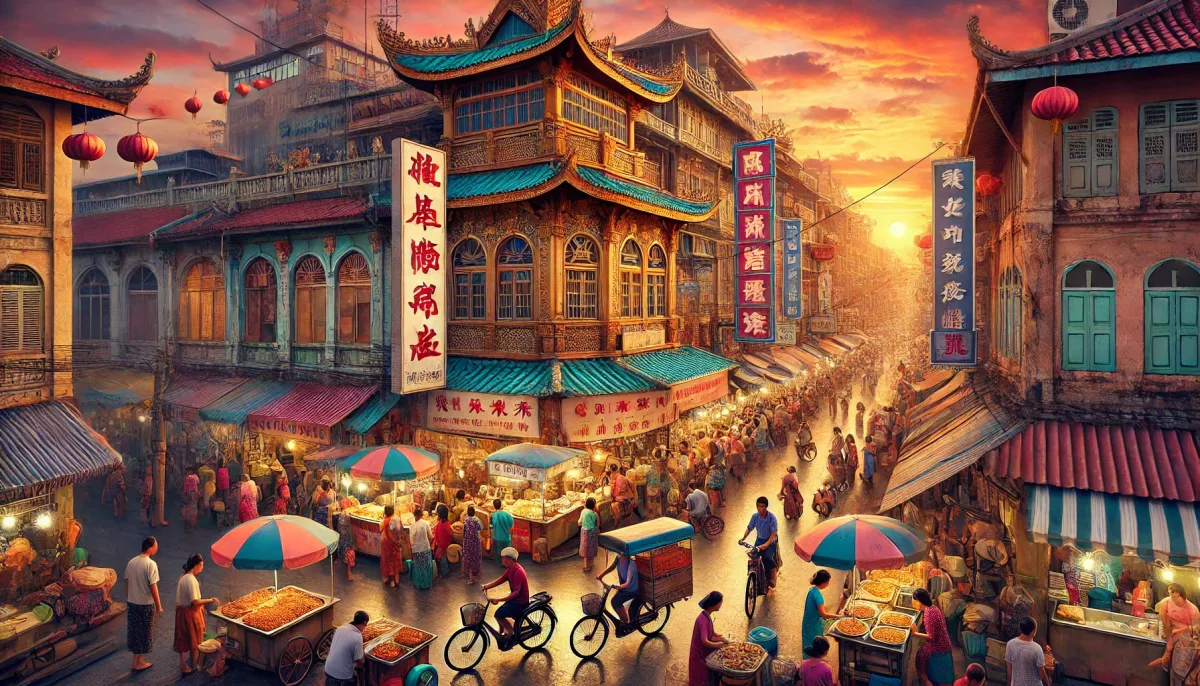Hi everyone, Mark here, your friendly neighborhood American backpacker, back with another adventure! This time, I'm exploring Southeast Asia, and my current stop is Myanmar, a country often described as one of the most dangerous in the region. My first destination: Yangon, Myanmar's former capital and largest city. While Yangon boasts a rich history, the city is undeniably shadowed by the ongoing internal conflict. Let me tell you, it’s a unique experience, to say the least.
Navigating Yangon's Unique Challenges
Arriving late at night in Yangon, I immediately noticed the city’s unusual atmosphere. The ongoing civil unrest has cast a long shadow, making itself known through checkpoints, armed soldiers, and barricades – sights usually reserved for war zones. While the fighting isn't directly in Yangon, the threat of attacks by local armed groups is palpable. This is why Yangon operates under a curfew; after midnight, the streets are eerily deserted. The contrast between the bustling daytime activity and the ghost-town silence of the night is striking.
The First 24 Hours: Sim Cards and Currency Exchange
One of my first priorities when visiting a new country is obtaining a local SIM card and exchanging currency. Unfortunately, arriving late at night made this a bit challenging. Shops close early due to the curfew, so I tackled these tasks the next morning. I decided to head to Yangon's Chinatown, where shops are more concentrated.
Yangon's Transportation: A Glimpse into Daily Life
To get to Chinatown, I hailed a taxi using a ride-hailing app. The ride itself offered some interesting observations. Yangon's taxi fleet consists mainly of older vehicles, reflecting the country's less-developed economy. I was surprised by the lack of motorcycles and the abundance of bicycles used by locals for daily commutes, even for deliveries. The sheer number of bicycles parked outside a bank caught my eye – easily a dozen or more!
The heavy security presence at every hotel – I counted four or five guards at mine – was a constant reminder of the current climate. Even larger restaurants had similar security details, much more than I saw in Phnom Penh.
The city’s right-hand traffic, with a mix of right-hand and left-hand drive vehicles, was also a unique experience. Navigation was a bit tricky because my GPS switched from kilometers to miles.
Here's a quick comparison of transportation costs:
| Location | Taxi Fare (USD) | Notes |
|---|---|---|
| Yangon, Myanmar | ~$2.50 (approx. 4600 MMK) | Much cheaper than Bangkok |
A City of Contrasts: Lush Greenery Amidst Urban Development
Yangon offers a fascinating juxtaposition of nature and urban development. From my hotel room (8th floor), I could see how the cityscape intermingles with sprawling greenery. It's unlike many other cities I've visited, where concrete jungles dominate. Here, it felt like finding buildings within a forest rather than trees scattered amidst skyscrapers.
The Impact of Curfew and Security Measures
The curfew's effects were noticeable throughout the day. While daytime Yangon appears relatively calm, the evening brings a sense of tension. Shops close early, and streets empty after sunset. The presence of numerous checkpoints, barricades, and armed personnel further reinforces the city's security measures. Even the pedestrian bridges are locked at night to prevent potential vandalism.
Yangon's Chinatown: A Search for SIM Cards and Currency Exchange
I eventually reached Yangon’s Chinatown, a large area, not just a single street. While many shops offered currency exchange, the exchange rates varied significantly. I found that shops owned by Chinese or ethnic Chinese individuals often accepted mobile payment apps like WeChat and Alipay, but the exchange rate for RMB (Chinese Yuan) was generally worse than for USD.
I gathered the following information on exchange rates:
| Currency | Official Exchange Rate (MMK) | Unofficial Exchange Rate (MMK) | Notes |
|---|---|---|---|
| USD | ~2100 | ~3400-3500 | Significant difference between official and unofficial rates |
| CNY (RMB) | ~450-460 | N/A | Significantly lower than USD |
Navigating Bureaucracy: Obtaining a Myanmar SIM Card
After some searching, I found a Mytel mobile operator store within a large shopping mall (Junction City). The experience was surprisingly similar to shopping malls in the US, a stark contrast to the streets outside. The mall itself provided a safe and air-conditioned environment, quite different from the street scene.
I chose a data plan with 50 GB of data for about $7 USD (35,000 MMK). We encountered a slight hiccup – we were short on cash – but luckily, the mall had an official currency exchange point, though the exchange rate was considerably lower.
The Culinary Delights of Yangon's Street Food
Later, we enjoyed a delicious and affordable meal of mala tang (a spicy Sichuan-style hot pot) in Chinatown, with dishes costing around $4-$5. We also sampled some local fried egg snacks. The affordability of street food, especially compared to the official currency exchange, was quite surprising.
Yangon at Night: A City Under Curfew
By 7:30 PM, many areas were already under curfew, and the streets were nearly empty. Our taxi driver shared insights into the city's recent history, confirming the impact of the ongoing conflict and the resulting decline in tourism.
Reflections on Yangon
My trip to Yangon was a whirlwind of experiences. The city is a captivating blend of historical significance, modern challenges, and unexpected contrasts. While the security concerns are undeniable, the resilience and warmth of the people are truly inspiring. I highly recommend a visit, but be prepared for the unique circumstances and be mindful of your safety.







